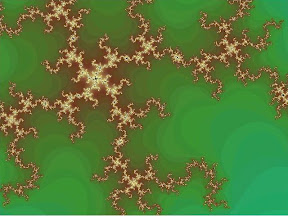A Sudoku is a partially filled 9x9 square in which each of the nine rows, columns and 3x3 boxes are to be filled with the numbers 1 through 9 with no duplication of a number within them. In Japanese sudoku means something like "simple choice" or "single number". In order to complete the Sudoku one first tries to eliminate the single options by asking the questions "Where can I place this number?" in a row, column or box or "What number goes here?" referring to some unfilled cell. Basically it's "where?" or "what?".
It helps if you know a "bag of tricks" for finding the single choices. I call them tricks because they are ways in which you can end up being "fooled" and trick can also mean a skill. The first trick involves identifying the rows and columns passing through some box which contain the same number and checking to see where that number can be placed in the box. Only one cell may be possible since one cannot duplicate the number in the rows and columns and the box is already partially filled. The second trick is to look at the empty intersection of some row and some column and check the numbers that have already been used there to see if only one possibility remains for the empty cell. The third trick is a variant of the first but considers the contents of a box in addition to the contents of the rows and columns to eliminate the possibilities. This trick involves the greatest amount of "scanning" and is the one I seem to miss the most often. Maybe I need more practice. These are the basic tricks but they do not always work and one may have to add to one's bag of tricks to solve the Sudoku. An additional trick might be to look for rows or columns with two remaining unfilled cells and checking to see if some number can be restricted to either one of them which would allow one to eliminate the possibility from elsewhere in the row or column.
That's it. As Einstein said, "Keep it simple."
Friday, May 9, 2008
Sunday, May 27, 2007
Fraction of Primes 2
The fit for the fraction of numbers that are primes posted a week ago can be modified to approximate a known result by using ln(n) instead of log10(n) and rearranging terms somewhat to get,

The empirical fit gives the power of ln(n) as slightly more negative than -1. For more information see the Wikipedia article on the prime counting function.

The empirical fit gives the power of ln(n) as slightly more negative than -1. For more information see the Wikipedia article on the prime counting function.
Monday, May 21, 2007
The Fraction of Primes
A prime number is a number which is not devisible by any numbers except for one and itself.
I just did a curve fit for the fraction of prime numbers less than or equal to a given number and found a reasonably good fit shown in the plot below. This is probably not a new result since I once saw something similar for a bound on the number of primes. It is just the empirical fit that I found. The fraction of primes is the solid line and the fit the dotted line.


I just did a curve fit for the fraction of prime numbers less than or equal to a given number and found a reasonably good fit shown in the plot below. This is probably not a new result since I once saw something similar for a bound on the number of primes. It is just the empirical fit that I found. The fraction of primes is the solid line and the fit the dotted line.


Saturday, February 10, 2007
The Octal System
This is a short poem that I wrote about 1982 in an effort to associate octal numbers with some basic concepts. It was inspired by the binary number system which associates 1 and 0 with "true and false", "yes and no" or "on and off" and also by aspects of "yin and yang." So here is,
The Octal System
001 me
010 you
011 we
100 they
101 he
110 she
111 yah
000 nay
The Octal System
001 me
010 you
011 we
100 they
101 he
110 she
111 yah
000 nay
Sunday, January 28, 2007
Mandelbrot Set Zoom
Wednesday, January 10, 2007
Favorite Limerick
Relativity
There was a young lady named Bright
Whose speed was far faster than light;
She set out one day,
In a relative way
And returned on the previous night.
Published anonomously by A. H. Reginald Buller
in Punch, 19 Dec, 1923.
Friday, December 22, 2006
Night pans with the RAZR V3
Subscribe to:
Comments (Atom)



